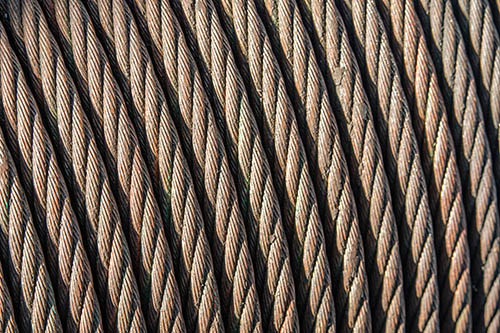Tree Cabling & Bracing in Southlake

Tree cabling and bracing is the practice of installing slightly flexible steel strand cables and braces to help provide supplemental structural support for the tree. Cabling and bracing help alleviate stress related to intense swaying in high winds, the weight of heavy foliage, and the weight of ice or snow. This method is especially important in areas that have a lot of severe weather, like North Texas.
Providing structural support limits the amount of movement during severe weather to prevent any branches from falling off and causing damage to your property. Tree cabling and bracing provide the same kind of support a cast does when we break a bone. Limiting the movement allows the bone to heal just like limiting the movement of the tree ensures no further breakage occurs.
How Do You Know if Your Tree Needs Cabling and Bracing?
The simple answer is you don’t. To the untrained eye, determining whether your trees need to be cabled or braced is difficult because it is not always obvious. Stump Grinding Southlake has a team of expert arborists who are fully trained to recognize whether or not your tree needs to be cabled or braced. We’ll come to assess and inspect your trees to see if cabling and bracing is the right solution for you.
Reasons For Cabling and Bracing Your Trees
There are many reasons why cabling and bracing your trees is essential. New tree saplings may need guidance to grow properly. Large trees growing near your house may need to be steered in the right direction so they don’t fall on your roof. Every tree is different and they have different needs. Perhaps they have co-dominant stems, cracks in branch unions, or cavities. But sometimes cabling and bracing isn’t necessary and can actually cause more harm than good. Let Stump Grinding Southlake’s crew of licensed arborists come to asses your unique needs and offer the best services at the best price.
Some key things to make note of when considering the practice of tree cabling and bracing include:
- Branches that are cracked, snapped or sagging
- A leaning trunk and/or exposed and uplifted roots
- Abnormal swaying in high winds
- Noticeable creaking or cracking under the weight of snow or ice
- Splitting or separation of the trunk or a branch connection
Types of Tree Cabling
Cabling is most often used to provide supplemental support for trees that have structural weaknesses or defects that could cause problems in the future if severe weather pushes and pulls against the upper canopy. Tree cabling serves as a way to restrict the swaying of branches while also redistributing stress more evenly.
Two main types of tree cabling:
1. Static Cabling
- Typically used to repair or supply more support in trees that have existing problems
- Any and all swaying or movement in the upper canopy is restricted
- Steel cables of the highest strength that offer no leniency are used
2. Dynamic Cabling
- Commonly used as a preventative measure
- Plenty of movement is allowed as the tree sways in the wind
- More elastic steel cables are used
Tree Bracing
Bracing is most commonly performed in lower sections of the tree rather than the upper canopy. Tree bracing acts as a way to reinforce the flaws or faults in the tree’s structure. Some of the most common problems include:
- Cracked trunks
- Holes or cavities
- Split unions
- Weak branch attachments
- Ingrown bark
Tree bracing is a fairly invasive procedure that requires steel rods to be internally installed above or below the damaged area. Tree cabling and bracing are generally used hand in hand to provide maximum support to even the most damaged trees.

